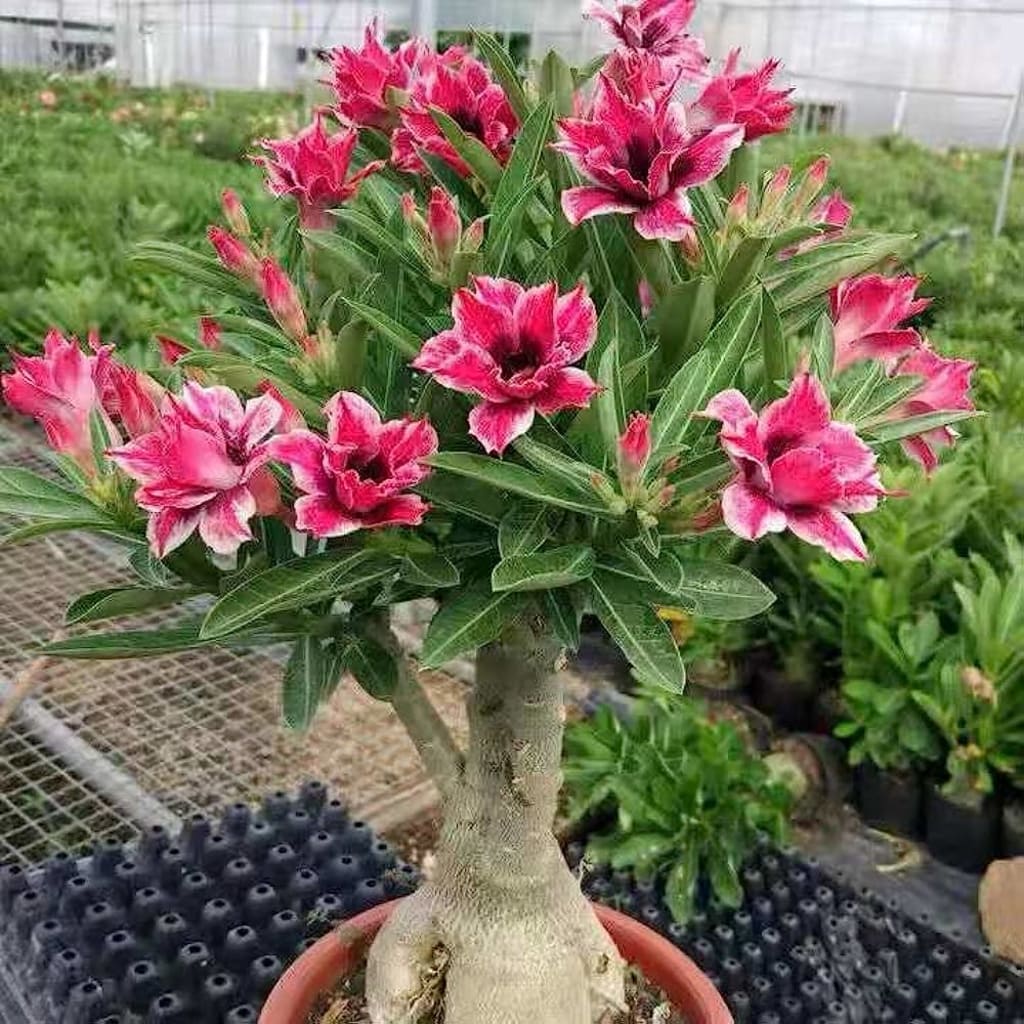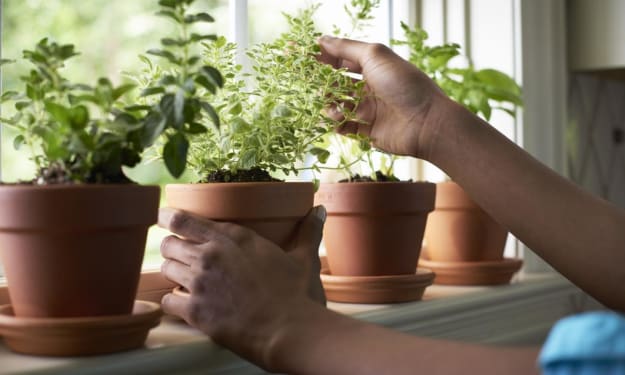Adenium Obesum
Exquisite Desert Roses

Adenium obesum, the Desert Rose. In this article, we will delve into the captivating features of this beautiful succulent. From its striking blooms to its unique caudex and diverse varieties, Adenium obesum has charmed gardeners and plant enthusiasts alike. Whether you're a seasoned gardener or a novice, this article will guide you through all aspects of cultivating and caring for the Desert Rose.
Adenium obesum: The Alluring Desert Rose
Adenium obesum, commonly referred to as the Desert Rose. This succulent belongs to the Apocynaceae family and is native to the arid regions of Africa and the Arabian Peninsula. Its name, "obesum," refers to the swollen base, known as the caudex, which stores water during dry periods, enabling the plant to survive in harsh, arid conditions.
The Desert Rose is celebrated for its stunning trumpet-shaped flowers that bloom in a variety of colors, including shades of pink, red, white, and more. Its succulent leaves and slow growth add to its charm, making it a fascinating addition to any garden or indoor space.
Cultivating Adenium obesum: Care Tips for Success
To ensure the thriving health of your Adenium obesum, follow these essential care tips:
1. Sunlight Requirements: Adenium obesum thrives in full sunlight, so place it in a sunny spot with at least 6 to 8 hours of direct sunlight daily.
2. Well-Draining Soil: Use a well-draining soil mix specifically designed for succulents, ensuring the excess water can escape quickly.
3. Watering Schedule: While the Desert Rose is drought-tolerant, it still needs regular watering. Water the plant thoroughly when the top inch of soil feels dry, and reduce watering in winter to avoid overhydration.
4. Temperature Tolerance: Adenium obesum prefers warm temperatures ranging from 65°F to 85°F (18°C to 29°C). Protect it from frost and cold temperatures.
5. Pruning and Shaping: Regular pruning encourages bushier growth and removes dead or unhealthy branches. Shape your Desert Rose according to your preference or train it into a stunning bonsai specimen.
6. Fertilization: Feed your Adenium obesum with a balanced, water-soluble fertilizer during the growing season.
Propagation Methods for Adenium obesum
If you wish to propagate your Adenium obesum, there are several effective methods to choose from:
1. Seed Propagation: Collect mature seeds from the plant's pods and sow them in a well-draining seed-starting mix. Keep the soil consistently moist until germination occurs.
2. Stem Cuttings: Take stem cuttings during the growing season, allow the cut ends to callus, and then plant them in well-draining soil. Care for the cuttings as you would a mature plant.
3. Air Layering: Air layering involves creating a small wound on the parent plant's stem, applying rooting hormone, and wrapping it with moist sphagnum moss and plastic wrap. Once roots develop, the new plant can be separated and potted.
4. Grafting: For more advanced gardeners, grafting involves combining the desired plant's scion with the rootstock of another compatible Adenium obesum variety.
FAQs (Frequently Asked Questions) about Adenium obesum
Q: How often should I water my Adenium obesum?
A: During the growing season, water your Desert Rose when the top inch of soil is dry. In winter, reduce watering to avoid overwatering.
Q: Can I grow Adenium obesum indoors?
A: Yes, you can grow the Desert Rose indoors as long as it receives sufficient sunlight. Place it near a south-facing window for the best results.
Q: Is Adenium obesum toxic to pets?
A: Yes, Adenium obesum is considered toxic to pets. Keep it out of reach of curious cats and dogs.
Q: How can I encourage my Desert Rose to bloom more frequently?
A: Ensure your plant receives ample sunlight and follows a regular watering and fertilization schedule. Prune it to promote bushier growth and encourage blooming.
Q: What should I do if my Desert Rose's leaves turn yellow?
A: Yellow leaves can indicate overwatering or poor drainage. Allow the soil to dry out between watering sessions and check the root system for signs of rot.
Q: Can I shape my Adenium obesum into a bonsai?
A: Yes, Adenium obesum is an excellent choice for bonsai cultivation. With patience and careful pruning, it can be shaped into stunning bonsai specimens.
In conclusion, Adenium obesum, the Desert Rose, is a captivating and resilient succulent that can thrive in a variety of settings. With its striking flowers, unique caudex, and ease of care, it has become a favorite among gardeners and plant enthusiasts worldwide. By following the proper care guidelines and propagation methods, you can enjoy the beauty of this enchanting succulent in your own garden or indoor space. Whether you're a seasoned gardener or a beginner, Adenium obesum offers an exceptional and rewarding horticultural experience. Embrace the allure of the Desert Rose and discover the joy of cultivating this extraordinary plant.
About the Creator
Kavya Organic Garden
Passionate about home gardening, plant care, growth, and maintenance. Join me on this exciting journey of organic practices and sustainable gardening! 🌱






Comments
Kavya Organic Garden is not accepting comments at the moment
Want to show your support? Send them a one-off tip.